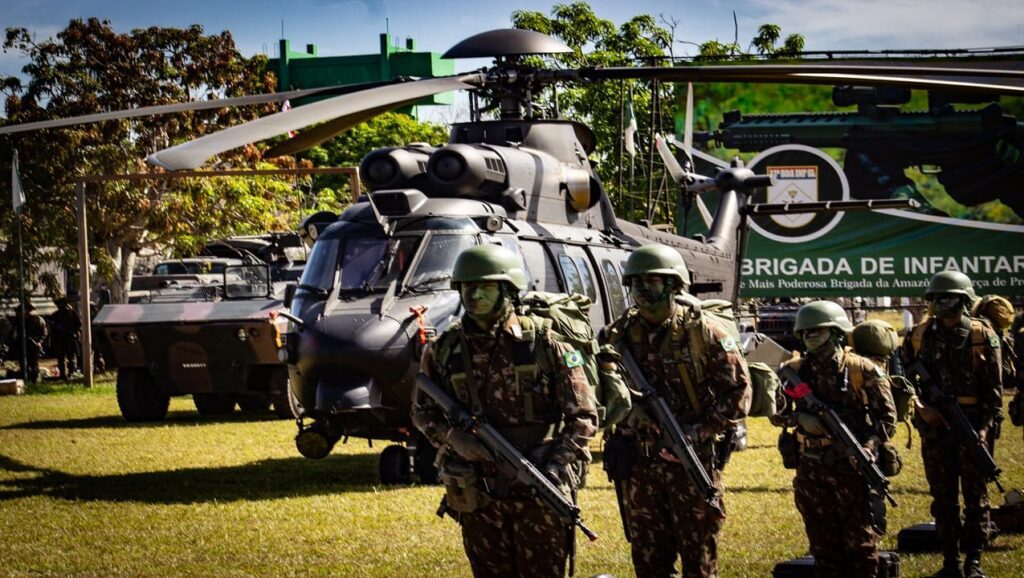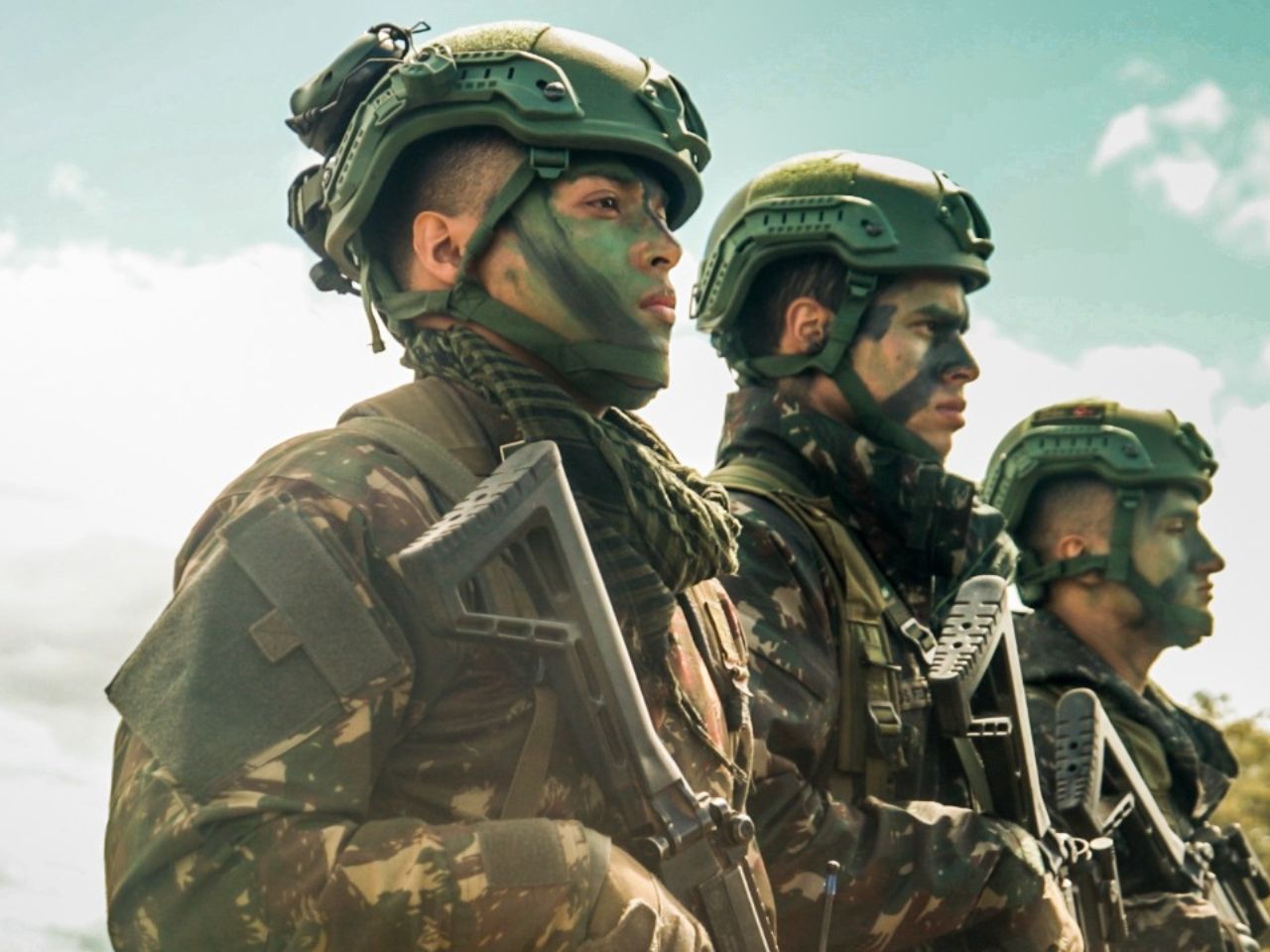Col Oscar Medeiros Filho
The beginning of the present century witnesses a phenomenon among the Armed Forces all over the world: the search for a transformation process. This demand comes from the confluence of a series of aspects that involve, on one hand, geopolitical issues, such as the end of the bipolar world order and the advance of globalization driven by the development of information technologies and the globalization of the internet, and, on the other hand, security issues, especially due to the dizzying increase of transnational actors and threats. All these aspects brought profound impacts on the concept of national security and, consequently, on the use of the Armed Forces.
The context of the last decades of the last century constitutes a disruptive environment for military employment. It is interesting to recall that it was the U.S. Army that, in the early 1990s, began to call this environment VUCA (an acronym that expresses a volatile, uncertain, complex and ambiguous context). It is in this context that a great debate about the very concept of security opens up, broadening it by adopting new dimensions (economic, social, environmental), in addition to the political-military one, and new levels of analysis (individual and global), besides the interstate level. The profusion of actors and threats has made the idea of military employment more complex, casting more “fog” on the understanding of what might constitute a future battlefield.
Using the US as a model, we can highlight at least three operational paradigms experienced by the US Armed Forces in the last three decades.
The first refers to the pattern adopted by the US during the first Gulf War in January 1991. Instead of invading and occupying Iraq, it opted for “surgical air strikes” on key infrastructure, forcing Saddam Hussein to end his offensive against Kuwait. Differently from the war of attrition, the so-called Operations Based on Effect sought, from the identification of the adversary’s center of gravity, to employ the precise use of force, rationalizing material resources and avoiding human losses.

In the following decade, in the war against Afghanistan and in the second Gulf War, the U.S. Army experienced the difficulty of occupying weakened countries, which involved not only classic military operations, but also a series of demands related to humanitarian missions, police actions, infrastructure reconstruction, etc., which came to be called Broad Spectrum Operations. Far beyond military operations, these new contexts demanded new management capabilities. We then began to speak of “war” and “non-war” missions, which covered preparation and employment, in addition to classic military operations, in activities to ensure law and order, public relations, and counterinsurgency, among others.
With the 2008 financial crisis and the return of geopolitical disputes between major actors, the sense of battlefield between state actors has regained relevance. Besides operations in the classic domains (sea, land and air), the cybernetic and space dimensions are now included. The so-called Multi-Domain Operations require new military capabilities that must adapt to different operational environments, making the ideas of joint and interagency operations necessary and relevant. It is therefore an attempt to join synergy of effort and convergence between the different domains.
In the last decades, we have witnessed a profusion of concepts related to the defense and employment of the Armed Forces such as “hybrid warfare”, “fourth generation warfare”, “asymmetric warfare”, “criminal insurgency” and “territorial bankruptcy”, among others. Such a profusion evidences the effort of military, state actors, and academics to provide conceptual tools for understanding complex military scenarios.
This quick walk through the last three decades is enough to show us, in a few words, how much the changing environment experienced during this period suggests new and transformed Armed Forces. This context, in itself, seems to reveal the eminent (and imminent) need to transform them. But transformed into what? What would be the scope of this transformation?
After all, what would be military transformation? First of all, it is important to note that the debate on military modernization precedes even the end of bipolarity. Far beyond operational paradigms, these debates sought to discuss the structure and organization of the Armed Forces. We can say that, in the literature on Defense, these debates originated in previous decades, from the discussion on Revolution of Military Affairs (RAM).
Regarding the “military transformation”, several concepts and many ideas started to be adopted by the specialized literature. In our strategic environment, a basic document of this debate was the article “Three Pillars of a Military Transformation”, written by Chilean Brigadier Jaime Covarrubias, published in 2007.
The idea is to understand the military changes that have occurred in the region from three different levels: adaptation, modernization and transformation. Thus, adaptation would consist only in adjusting existing structures to continue executing the expected tasks; modernization would involve the optimization of capabilities to fulfill the mission in the best way; and transformation would be related to the development of new capabilities to fulfill new missions or play new roles in combat.
For the Chilean brigadier, transformation would not only refer to obtaining new technologies (which would be modernization), but would involve deep reforms and changes of orientation in doctrine and force structure. Transformation, in short, would mean changing the Force’s conceptions, projecting it into the future.
Such a conception of transformation suggests a continuum in which transformation would be at the extremity of greater change, at a more advanced stage, and which would go beyond adaptation and modernization.
In terms of discourse, the military change continuum model has come to be quickly understood as part of a process of “civilizational” evolution that has occurred in recent decades, marked by a change of era and the passage from an “industrial society” to an “information society” – from the industrial age to the information age.

We would like to draw attention to two aspects that make the adoption of the idea of military transformation as understood above complex.
The first aspect concerns the substantive meaning of what is meant by transformation. The idea of “profound reforms” suggests a radical effort of change that leads the Force to a kind of “metamorphosis”. Now, if we use examples from nature itself to describe the meaning of metamorphosis, we can find two distinct models: one that involves substantial change and another that refers only to change of form. The first can be represented by the metamorphosis that leads to the transformation of a caterpillar into a butterfly. This model would certainly not serve the Armed Forces, which are conservative institutions that maintain non-negotiable fundamental values and are based on hierarchy and order.
In this sense, it is worth noting that the conclusion of the document “The Army’s transformation process”, published in May 2010, by the Brazilian Army General Staff, presents that “Three Basic Assumptions will condition the transformation: the valorization of the Mandatory Military Service, the maintenance of the Presence Strategy and the preservation of Army values and traditions”.
The second model, formal, of metamorphosis present in nature is perhaps closer to what is desired for the Armed Forces. It is the chameleon. It is always adapting to its environment, but keeps its substance intact.
The second aspect to be considered concerns the idea of transformation as a process suggesting a change from A to B, where it is possible to establish a schedule of activity, like a project on a time scale.
Imagining a military transformation process as something that has a beginning, middle and end does not seem realistic. After all, at what point can one say that an Armed Force is “transformed”? What would allow us to say that we have reached the “information age”?
The big question is that, unlike the industrial age, in which there was a certain temporal permanence of models such as the armored age, the aviation age, etc., in the information age, globalization has been marked by constant change and uncertainty arising, in many cases, from the exponential growth of technological advances. In other words, in a VUCA environment, transforming oneself to achieve the desirable model seems an unlikely mission.
About the author:
Col. Oscar Medeiros Filho – He holds a Bachelor’s and a Bachelor’s degree in Geography (UFMS, 1995). He has a Masters in Human Geography (USP, 2005) and a PhD in Political Science (USP, 2010) and a post-doctoral internship in International Relations (UnB, 2018). He was a professor at EsPCEx, AMAN and Instituto Meira Mattos (ECEME). He is currently Research Coordinator of the Army Center for Strategic Studies and Professor of International Relations at Uniceub.
*** Translated by the DEFCONPress Team ***
